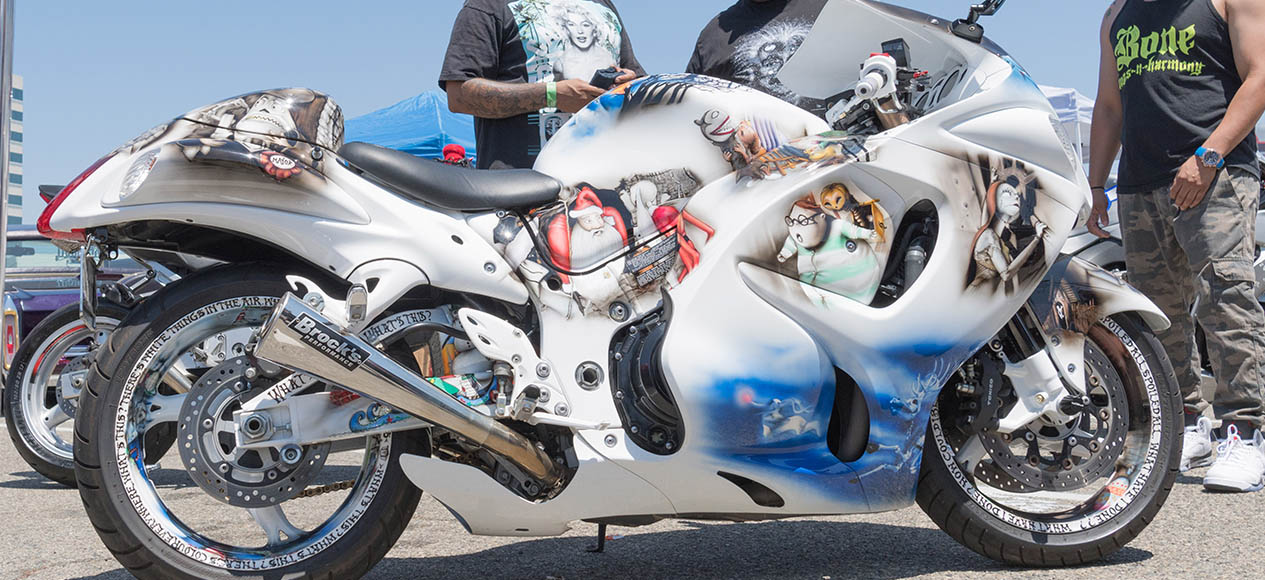For many motorcyclists, modifying our motorbikes is an integral part of the ownership experience.
Adding new parts can be a really enjoyable experience, an opportunity to tinker with your bike, unlock more performance or to give it a more personalised look. Other modifications, like top boxes and panniers, help improve the practicality of the bike.
But is it better to modify or stay standard?
In truth, only you can answer this question. It’s your bike, and if you enjoy the mods you’ve made then go for it. Some riders like to modify their bike to better make it fit their size (especially for the shorter or taller rider) and others for performance and looks.
Some simple changes or upgrades are barely considered modifications – fitting a Scottoiler, tank pad, crash bungs or a carbon yoke protector are all practical mods. They are so ubiquitous that most of us wouldn’t consider them to be modifications at all, but as they are changing the bike from OE (original equipment) they technically are. These add very little to the aesthetic, performance or value of the bike, but can be worthwhile additions as they might save you money in the long term, especially if your bike is involved in a low speed spill.
The big stuff such as changing exhausts, creating custom paint jobs and tuning the engine are much more dramatic. These can be expensive and may have further implications. For example, some modifications may affect your insurance premium (and all modifications, big or small, should be declared to your insurer to avoid the risk of invalidating your policy) or affect the legality of your bike. For example, a loud exhaust or small number plate may result in your bike failing the MoT test.
If you love your modified motorbike then that’s great, but when it comes time to move your bike on, you’ll probably find that a standard machine will be easier to sell. For sure, some accessories are more desirable than others, especially those offered by the manufacturers – for example, every Triumph Speed or Street Triple worth its salt will have the official flyscreen and belly pan fitted, and genuine BMW luggage is a valuable accessory for any GS or RT and should not only make the bike easier to sell, but more valuable too. Ducatis with Termignoni silencers are almost de rigueur, as they are official accessories and help unlock that glorious V-twin soundtrack.
Less mainstream modifications, like anodised parts, windscreens, indicators, loud exhausts and funky graphics are more subjective. Some prospective buyers may like them, some may not, but by trying to sell your modified bike you’ll most likely be narrowing the number of potential customers for your steed, and giving them an excuse to barter you down on price. Even if they like the look of your customised motorcycle, the fact that it has been modified may set off alarm bells with them as they may question the bike’s history (has it been crashed, for example) or whether or not the modifications will make it more difficult to insure.
A top tip is to keep the standard parts and refit them when it comes to selling the bike. You can always sell the custom parts separately, or throw them in to sweeten up the deal.
On the classic bike scene, stock is definitely more desirable. Older bikes are often fitted with aftermarket or reproduction parts, especially for items which rot or wear out, such as tyres and exhausts. Truly original bikes shoot up in value, while examples which have been fitted with third party parts struggle to rise above banger money – especially when the supply of original spares dry up. A quick look on eBay, for example, sees immaculate (and totally standard) early Yamaha R1s going for upwards of seven grand while tidy, original examples fetch in the region of £5k. Modified bikes won’t command anything like those prices though, and as little as £2k will get you something with an MoT and which runs fine, as long as you’re willing to put up with a non-standard paint job, aftermarket exhaust and windscreens of varying colours.
So while customised bikes are cool and help make your ride more personal, it’s probably best that you keep the standard parts if at all possible. That dustbin sized silencer on your 2019 Suzuki GSX-R1000 might be the first thing you want to dump when you get it home from the dealership, but rather than chucking it in the bin or flogging it off on an internet auction site, maybe it is best to tuck it away safely in the attic. Who knows, refitting that big ol’ exhaust you couldn’t wait to get rid of in 2019 might well add thousands to the value in 2050!




